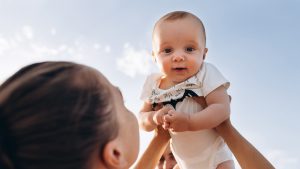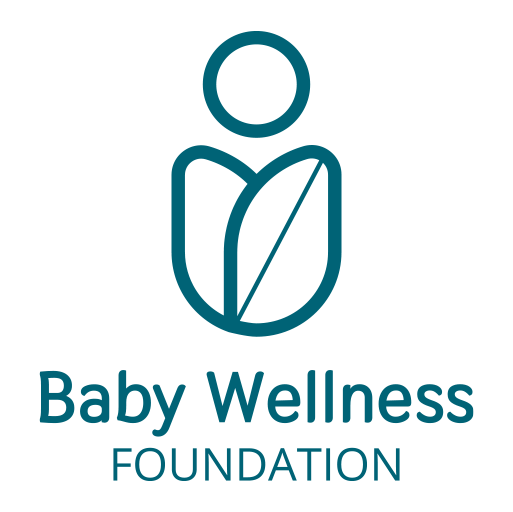Approfondimenti scientifici
Checklist for Traveling with a Newborn: What to Bring and How to Get Organized
Travelling with a newborn is an experience that, if well organized, can prove not only calm but also pleasant and rejuvenating for the whole family. However, the logistical management of a baby in the first months of life requires planning, practicality, and attention to every detail.

Below is a guide based on scientific evidence and good pediatric practices.
Documents and Health Information
According to the American Academy of Pediatrics (AAP), newborns are more vulnerable to systemic and respiratory infections in the first 6–8 weeks of life due to the immaturity of the immune system. During this period, exposure to crowded places, such as airports or stations, increases the risk of contracting potentially dangerous pathogens. It is therefore recommended to postpone non-essential travel until the end of the second month of life, especially during epidemic seasons (e.g., influenza, RSV).
Complete health documentation allows timely and targeted intervention in case of emergency during travel, especially if the newborn has specific medical conditions (e.g., prematurity, severe reflux, congenital heart disease). In addition, in many countries vaccination documentation is required for access to healthcare facilities or for customs purposes.
Checklist
- Newborn’s health card
- Passport or ID card if needed (required for international travel)
- Vaccination booklet
- Trusted pediatrician’s contact details
- Health insurance policy (recommended for travel abroad)
- Medical records or recent reports in case of known conditions
Feeding
The World Health Organization (WHO) recommends exclusive breastfeeding for the first 6 months of life, as it provides natural and adaptive immune protection. However, for those using formula, it is essential to ensure proper hygiene in the preparation and storage of milk: the use of sterilized bottles and safe water is essential to prevent neonatal gastroenteritis, one of the main causes of infant dehydration during travel.
The AAP highlights the importance of preparing doses in advance (e.g., powdered formula dispensers) to reduce parental stress and ensure a prompt response when the newborn shows signs of hunger. For air travel, it is permitted to carry infant feeding liquids beyond standard limits, provided they are declared to security personnel.
Checklist
- Breast milk (if breastfeeding)
- Formula (sterilized bottles, bottled water suitable for infants, powdered formula dispenser)
- Travel bottle warmer or thermos
- Disposable or fabric bibs
Hygiene and Diaper Changing
Frequent diaper changes are essential to prevent diaper dermatitis, very common during long trips due to prolonged moisture on the skin. Cleansing and protective products must be dermatologically tested and free from aggressive fragrances, according to the guidelines of the Italian Association of Dermatologists (AIDECO).
In addition, parents or caregivers should wash their hands before and after each change to prevent the transmission of viruses and bacteria. Hand sanitizer can be a valid alternative in the absence of running water, but should not replace washing with soap and water when available.
Checklist
- Sufficient diapers for the duration of the trip + extra supply
- Gentle baby wipes
- Protective diaper cream
- Disposable changing pads
- Bags for used diapers
- Complete change of clothes (onesie, sleepsuit, socks)
- Hand sanitizer gel
Sleep and Comfort
The updated 2022 AAP recommendations for the prevention of SIDS (Sudden Infant Death Syndrome) indicate that sleep should occur in a supine position, on flat and firm or semi-firm surfaces, without pillows or soft objects.
While traveling, this can be ensured with portable cribs or approved carrycots. It is essential to avoid sleeping in baby carriers or car seats for long periods when the newborn is not supervised, as neck flexion in a seated position may obstruct the airways. For long car journeys, frequent breaks are recommended to alternate the baby’s position.
Checklist
- Light blanket
- Nursing pillow
- Pacifier (if used)
- Foldable stroller
- Stroller sunshade/rain cover
Clothing
Newborns do not regulate their body temperature effectively. The National Institute for Health and Care Excellence (NICE) recommends layering clothing (“onion style”) to facilitate thermal management in newborns: several thin layers that can be added or removed according to the environment. A newborn’s skin is thin and sensitive, so natural, breathable, hypoallergenic fabrics such as cotton or bamboo are preferred.
In case of sun exposure, the European Society for Pediatric Dermatology recommends the use of sunscreen in the first months of life; it is also preferable to use physical barriers such as covering clothing, hats, and parasols.
Checklist
- Comfortable layered clothing
- Sun hat or warm hat
- Baby sunscreen (if > 6 months)
- Baby sunglasses (if used)
- Non-slip socks for indoor environments
Medication and First Aid
Pediatric paracetamol is generally considered safe for managing fever or mild pain in newborns, but it must be administered only under medical advice and with weight-adjusted dosing.
A digital thermometer is preferred over infrared ones for greater accuracy, especially in children under 3 months. According to the Italian Society of Pediatrics, the travel kit should include nasal cleaning tools, which are essential especially in air-conditioned environments, as dry mucous membranes can promote respiratory infections. The use of saline solution is recommended even in healthy newborns to promote nasal breathing.
Checklist
- Digital thermometer
- Paracetamol drops (under pediatrician’s advice)
- Saline solution for nose
- Soothing cream for irritation
- Gentle plasters, sterile gauze
Entertainment and Stimulation
In the first months, the newborn is attracted to simple and repetitive visual and auditory stimuli. According to the AAP, a stimulating but not overwhelming travel environment helps the newborn remain calm and better regulate sleep-wake rhythms. It is important to choose CE-certified toys, non-toxic, without small detachable parts, and with washable surfaces. In addition, it should be remembered that overstimulation typical of noisy, crowded, or interaction-rich travel can cause irritability or difficulty falling asleep. It is therefore useful to create quiet moments even while traveling.
Checklist
- Soft and safe toys (washable, non-toxic, no small parts)
- Tactile or musical books
- Doudou or comfort object
- Limit loud noises and alternate stimulation with quiet moments
Means of Transport: Safety First
The WHO and European health authorities emphasize that, already at hospital discharge, the use of an approved infant car seat is recommended. Subsequently, a car seat compliant with current regulations must be used, installed rear-facing at least until 15 months of age—preferably up to 4 years, as required by the new i-Size regulations (ECE R129).
During travel, especially by plane, it is advisable to use a certified restraint system (CRS – Child Restraint System) approved for onboard use by airlines. Using the car seat on trains or buses, where permitted, improves passive safety for the newborn. Luggage identification tags and an “organized-by-blocks” packing system (e.g., backpack for changing supplies, bag for feeding items, suitcase with spare clothes) help reduce search time and improve parental stress management.
Checklist
- Approved car seat
- Luggage ID tag
- Cabin stroller (for air travel)
- Family travel document holder
Travelling with a newborn is not only possible, but can become a positive and enriching experience if approached with preparation, awareness, and flexibility. The proposed checklist represents an integrated model combining practicality and safety, uniting the daily experience of parents with the best recommendations from pediatric associations.
American Academy of Pediatrics. Infant Travel and Sleep Safety Guidelines, 2022
Centers for Disease Control and Prevention (CDC). Hand Hygiene in Community Settings, 2023
European Society for Pediatric Dermatology. Sun Protection in Infants and Young Children, 2022
NICE. Postnatal Care: Guidance and Recommendations, 2023
Società Italiana di Pediatria. Viaggiare sicuri con neonati e bambini, 2023
WHO. Road Traffic Injuries: Child Passenger Safety, 2021
